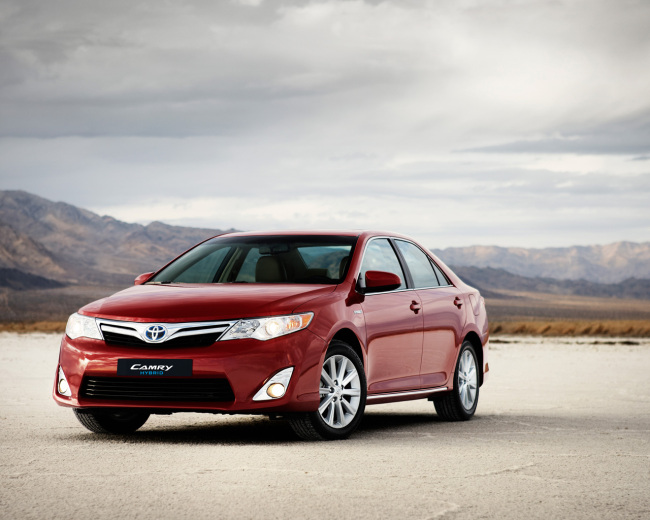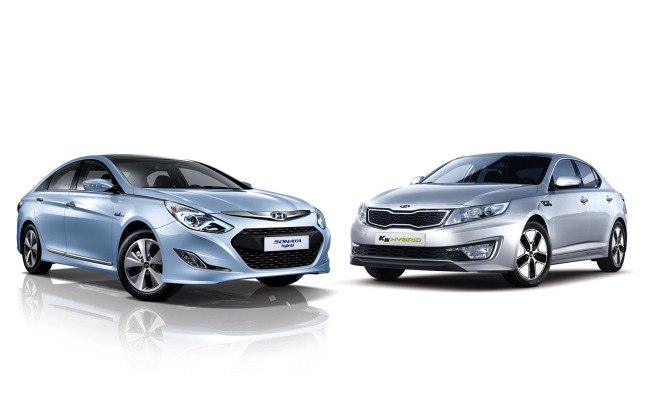최근 하이브리드 자동차가 각광받고 있다. 뛰어난 연비만큼 가격도 비싸다.
실제로 시판 중인 하이브리드 자동차와 같은 급의 가솔린 차종을 비교해봤더니 비싼 차값과 절약한 기름값을 상쇄하려면 10년은 타야 한다는 결론이 나왔다.
일반적으로 국산차의 교체주기는 5-6년 수입차는 3-4년이다.
현대 소나타, 기아 K5, 도요타 캠리의 하이브리드 모델들은 가솔린모델들에 비해 약 800만원에서 천만원 비싸다. 연간 주행거리를 15,000 킬로미터로 휘발유가격을 수요일 현재 리터당 1,992원으로 가정했을 때 약 10년을 타야 추가비용을 회수할 수 있다.
실제로 시판 중인 하이브리드 자동차와 같은 급의 가솔린 차종을 비교해봤더니 비싼 차값과 절약한 기름값을 상쇄하려면 10년은 타야 한다는 결론이 나왔다.
일반적으로 국산차의 교체주기는 5-6년 수입차는 3-4년이다.
현대 소나타, 기아 K5, 도요타 캠리의 하이브리드 모델들은 가솔린모델들에 비해 약 800만원에서 천만원 비싸다. 연간 주행거리를 15,000 킬로미터로 휘발유가격을 수요일 현재 리터당 1,992원으로 가정했을 때 약 10년을 타야 추가비용을 회수할 수 있다.

물론 정부보조금 최대 340만원과 업체들이 제시하는 할인을 감안하면 이 기간은 약 8년으로 줄어든다.
현대-기아차의 기술력이 높아지고 있지만 관련 특허를 거의 독점하고 있는 도요타의 하이브리드모델들은 비싼 가격을 감안하더라도 높은 연비과 가격 경쟁력을 갖고 있었다.
세계 판매 1위 하이브리드 자동차 도요타 프리우스의 경우 비슷한 가격의 기아 K5 하이브리드 모델에 비해 천만원 비쌌지만 7년 이상만 타면 가격차가 상쇄되는 것으로 나타났다.
업체들은 하이브리드 자동차들은 하위 모델의 경우에도 고사양을 장착하고 있기 때문에 단순비교는 어렵다며 소비자들이 보다 꼼꼼히 자신의 운전습관 등을 고려해 선택할 것을 조언했다.
대림대 자동차학과 김필수 교수 역시 하이브리드 기술이 이미 궤도에 올랐고 안전성과 가격이 안정화되고 있는 단계이기 때문에 연간 주행거리가 15,000 킬로미터가 넘고 주로 시내에서 운전을 한다면 하이브리드 차량을 선택하는 것이 장기적으로는 유리하다고 이야기했다.

그는 "유럽인들에 비해서 한국운전자들의 연료소비가 1.5배에 이른다. 아무리 고효율의 자동차를 타더라도 급정거, 급출발 같은 거친 운전습관을 버리지 않는다면 소용이 없다"며 하이브리드 자동차의 판매 뿐 아니라 "에코드라이빙"에 대한 정부의 홍보와 정책적 지원이 필요하다고 덧붙였다.
(코리아헤럴드 / 이지윤 기자)
<관련 영문 기사>
Hybrids takes almost 10 years to pay off car prices
By Lee Ji-yoon
Kim Min-kyu, a 35-year-old TV producer, recently purchased a Toyota Prius, the world’s best-selling hybrid. Despite the car price being almost double that of same-size Korean brand cars, he feels good about his fuel savings.
“I actually didn’t like the futuristic car design but its fuel efficiency rating was more appealing to me. It’s also cool to be seen driving a hybrid,” he said.
Amid high gasoline prices, a growing number of Korean drivers, like Kim, are turning to more fuel-efficient vehicles such as clean-diesels, hybrids and electric cars.
Last year, hybrid sales in Korea soared more than 50 percent to 37,000 vehicles from 20,000 in 2011, while diesel cars made up 60 percent of the total imported car market.
Experts warn, however, that drivers need to gauge exactly how much money they can save by opting for the vehicles that promise a better mileage but at a higher price.
According to data collected from carmakers, it would take almost 10 years to pay off the added cost of a hybrid car compared to its conventional gasoline model. (The data assumes that an average Korean drives 15,000 kilometers a year and the gasoline price is 1,992 won per liter, the price as of Wednesday.)
The hybrid Hyundai Sonata, Kia K5 and Toyota Camry are likely to generate enough savings through lower fuel costs within 10 years on average to make up the 8 million won to 10 million won price difference with the original gasoline models.
Considering a 3.4 million won government subsidy and promotional discounts by carmakers, the payback period could be shortened to eight years, the data found.
In Korea, according to other industry data, car owners replace their vehicles every five to six years and every three to four years for imported car brands.
Hybrids by Toyota, which owns the patent rights to most of the important hybrid technologies, produce better mileage ratings and more monetary savings than Korean brand cars for now.
The hybrid Prius, with a fuel economy of 21 kilometers per liter -- one of the highest -- makes up the 10 million won price difference with the similar-size Kia K5 within seven and a half years.
Carmakers, however, were cautious about the direct comparison between hybrids and gasoline models.
“A hybrid model usually comes with higher-end options compared to its gasoline version. So customers need to consider diverse factors when they make a car choice,” said a Hyundai official, declining to be named.
Other eco package versions or diesel-powered cars also take five years on average for the owners to see monetary savings, the data showed.
Experts advise that a driver who drives more than 15,000 kilometers a year generally in urban areas would benefit most from buying a hybrid.
They say a diesel driver also needs to consider that the diesel price, even though it’s cheaper than gasoline, is also rising, and engine maintenance costs at least three to four times that for gasoline engines.
Despite the lower price competitiveness, hybrids are undeniably the next big trend in the auto industry, said Kim Pil-soo, an automotive studies professor at Daelim College.
“Hybrid technologies have seen major progress compared to those for electric cars. Their safety has largely been proven even when the owner drives the car for more than 10 years,” he said. “Car prices are also stabilizing now.”
He predicted it would take four to five years for Hyundai to catch up with the hybrid leader Toyota in terms of technologies and price competitiveness.
Kim, like other experts, agrees that driving a fuel-efficient car is not enough without “eco-driving.”
“Korean drivers use 1.5 times more fuel than their European peers. If they don’t change their rough driving habits, any fuel-efficient car is meaningless,” said the professor.
(jylee@heraldcorp.com)







![[Weekender] How DDP emerged as an icon of Seoul](http://res.heraldm.com/phpwas/restmb_idxmake.php?idx=644&simg=/content/image/2024/04/25/20240425050915_0.jpg&u=)




![[Music in drama] An ode to childhood trauma](http://res.heraldm.com/phpwas/restmb_idxmake.php?idx=644&simg=/content/image/2024/04/25/20240425050929_0.jpg&u=)





![[Herald Interview] Mistakes turn into blessings in street performance, director says](http://res.heraldm.com/phpwas/restmb_idxmake.php?idx=652&simg=/content/image/2024/04/28/20240428050150_0.jpg&u=20240428174656)
